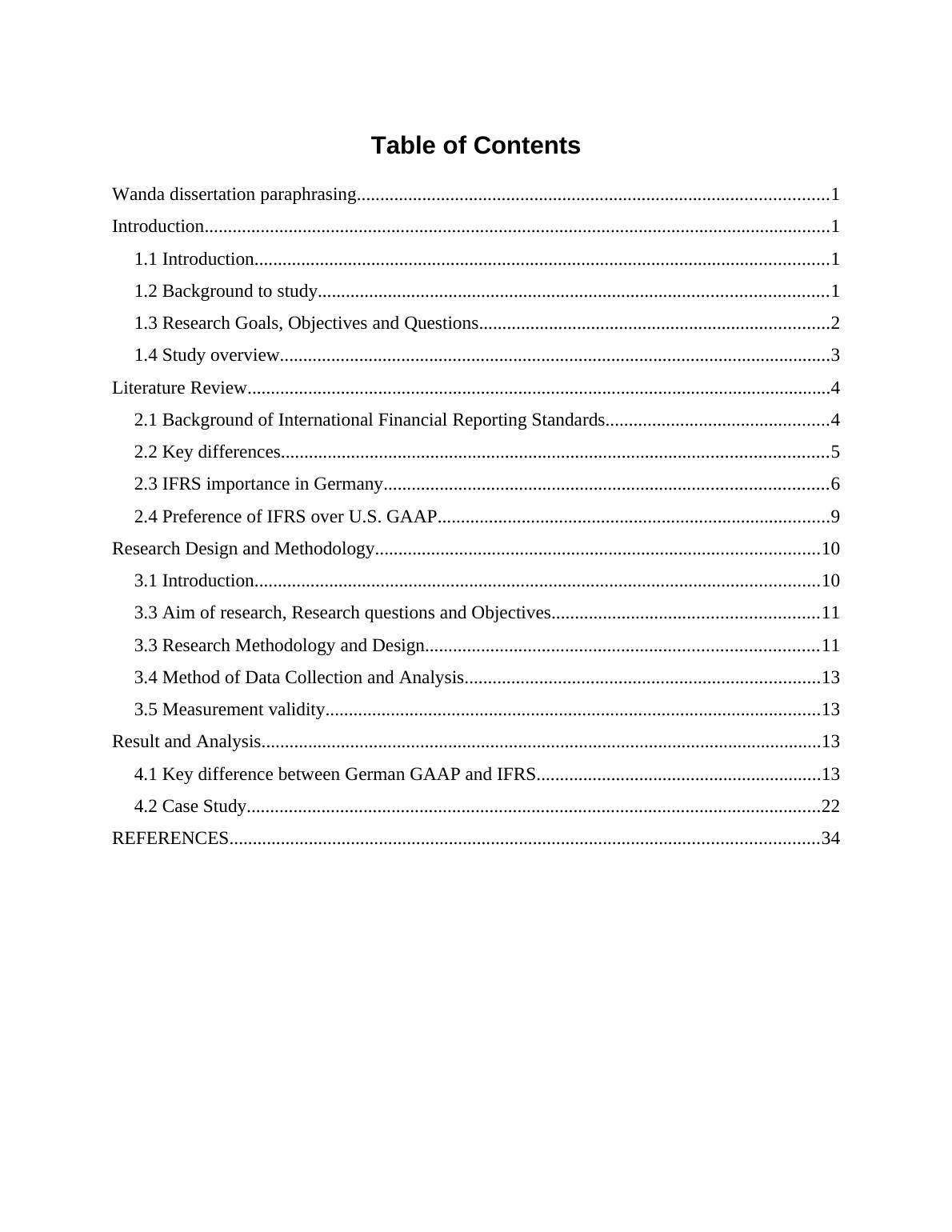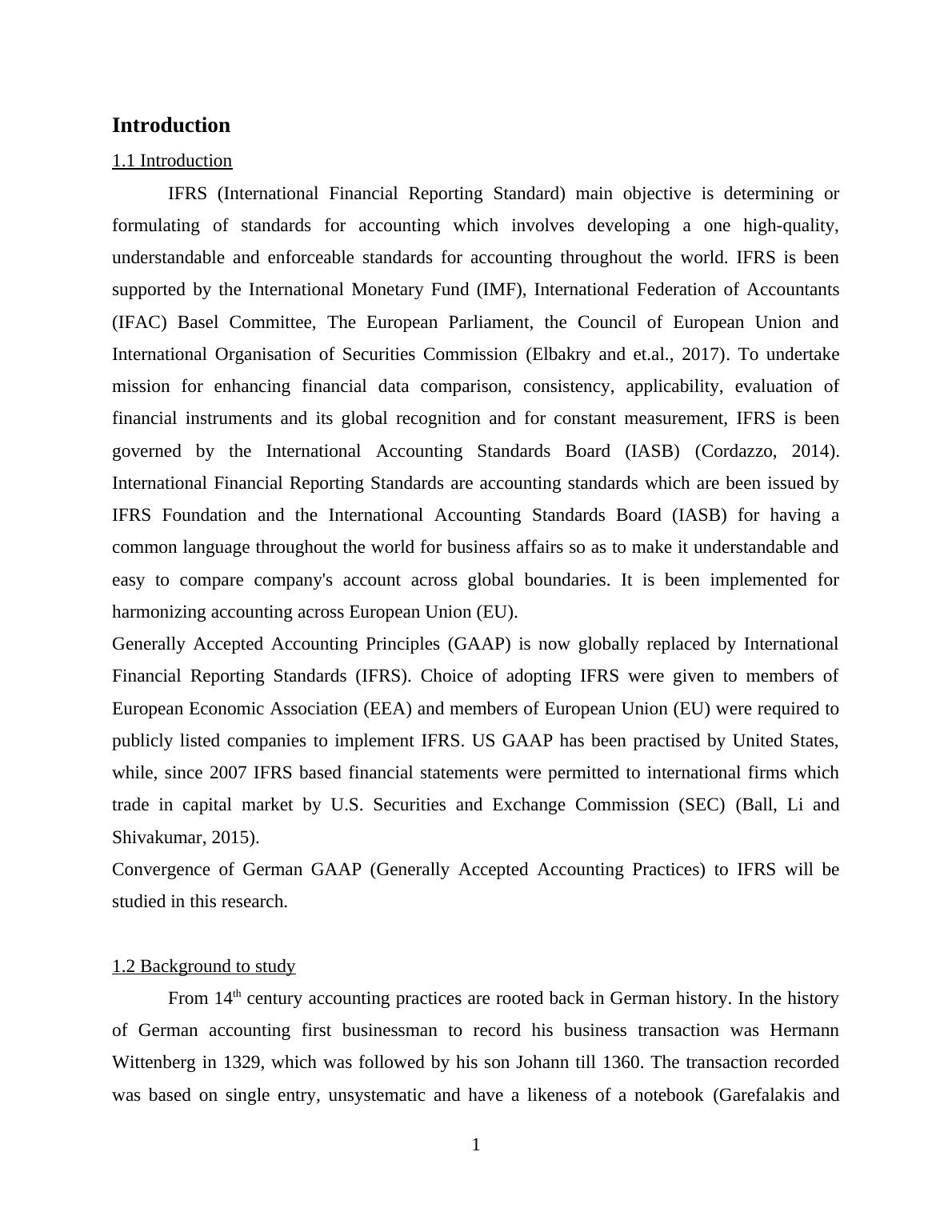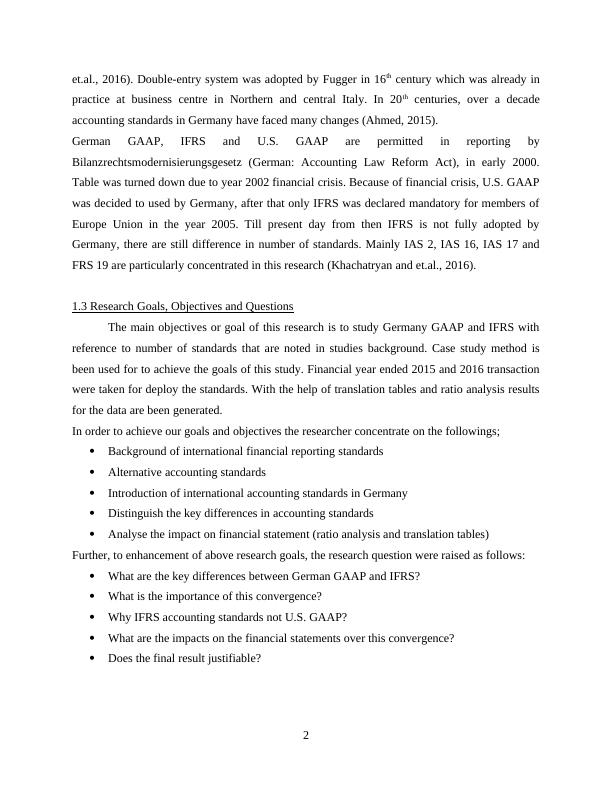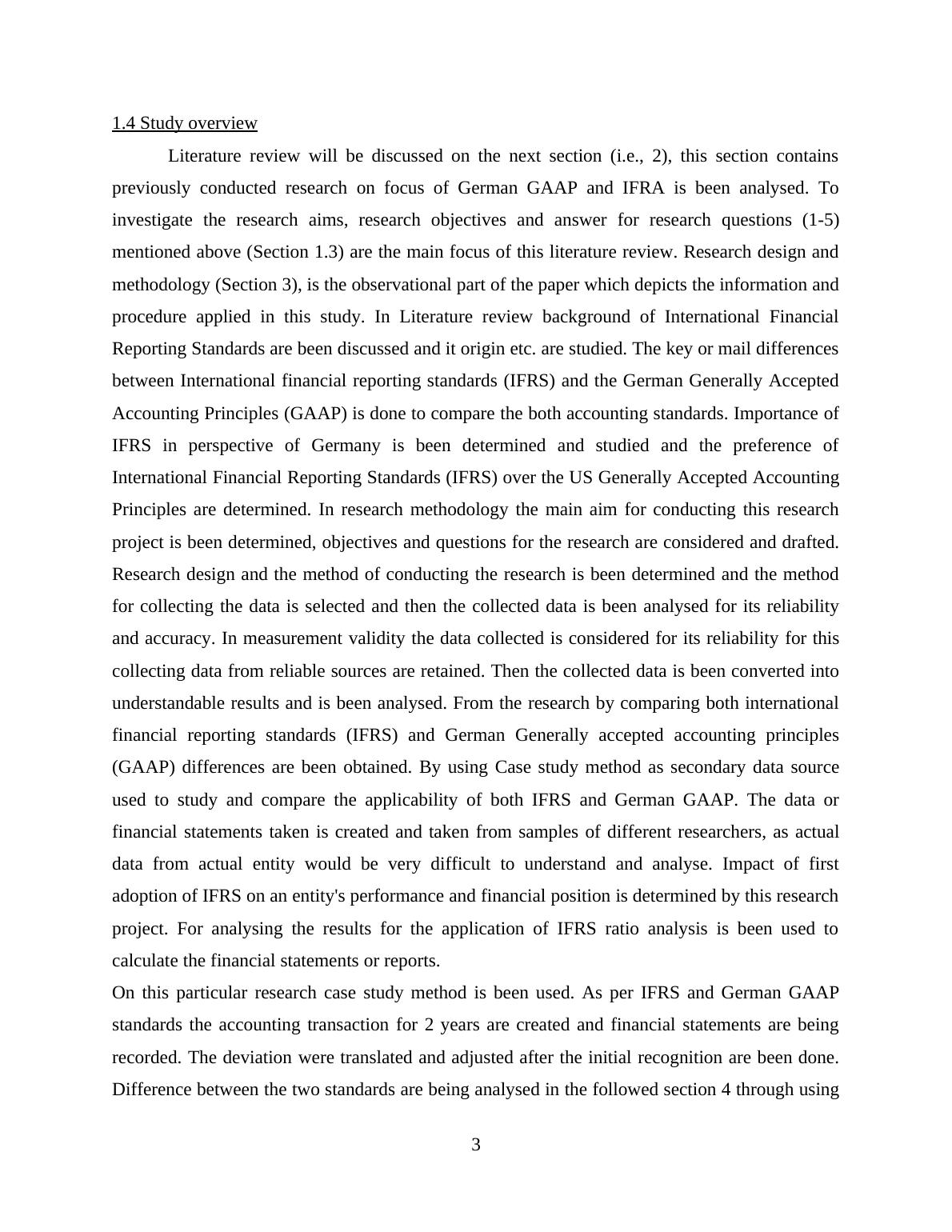International Financial Reporting Standards
Added on 2020-10-22
37 Pages11942 Words146 Views
Wanda dissertation paraphrasing

Table of ContentsWanda dissertation paraphrasing.....................................................................................................1Introduction......................................................................................................................................11.1 Introduction...........................................................................................................................11.2 Background to study.............................................................................................................11.3 Research Goals, Objectives and Questions...........................................................................21.4 Study overview......................................................................................................................3Literature Review.............................................................................................................................42.1 Background of International Financial Reporting Standards................................................42.2 Key differences.....................................................................................................................52.3 IFRS importance in Germany...............................................................................................62.4 Preference of IFRS over U.S. GAAP....................................................................................9Research Design and Methodology...............................................................................................103.1 Introduction.........................................................................................................................103.3 Aim of research, Research questions and Objectives.........................................................113.3 Research Methodology and Design....................................................................................113.4 Method of Data Collection and Analysis............................................................................133.5 Measurement validity..........................................................................................................13Result and Analysis........................................................................................................................134.1 Key difference between German GAAP and IFRS.............................................................134.2 Case Study...........................................................................................................................22REFERENCES..............................................................................................................................34

Introduction1.1 IntroductionIFRS (International Financial Reporting Standard) main objective is determining orformulating of standards for accounting which involves developing a one high-quality,understandable and enforceable standards for accounting throughout the world. IFRS is beensupported by the International Monetary Fund (IMF), International Federation of Accountants(IFAC) Basel Committee, The European Parliament, the Council of European Union andInternational Organisation of Securities Commission (Elbakry and et.al., 2017). To undertakemission for enhancing financial data comparison, consistency, applicability, evaluation offinancial instruments and its global recognition and for constant measurement, IFRS is beengoverned by the International Accounting Standards Board (IASB) (Cordazzo, 2014).International Financial Reporting Standards are accounting standards which are been issued byIFRS Foundation and the International Accounting Standards Board (IASB) for having acommon language throughout the world for business affairs so as to make it understandable andeasy to compare company's account across global boundaries. It is been implemented forharmonizing accounting across European Union (EU).Generally Accepted Accounting Principles (GAAP) is now globally replaced by InternationalFinancial Reporting Standards (IFRS). Choice of adopting IFRS were given to members ofEuropean Economic Association (EEA) and members of European Union (EU) were required topublicly listed companies to implement IFRS. US GAAP has been practised by United States,while, since 2007 IFRS based financial statements were permitted to international firms whichtrade in capital market by U.S. Securities and Exchange Commission (SEC) (Ball, Li andShivakumar, 2015).Convergence of German GAAP (Generally Accepted Accounting Practices) to IFRS will bestudied in this research.1.2 Background to studyFrom 14th century accounting practices are rooted back in German history. In the historyof German accounting first businessman to record his business transaction was HermannWittenberg in 1329, which was followed by his son Johann till 1360. The transaction recordedwas based on single entry, unsystematic and have a likeness of a notebook (Garefalakis and1

et.al., 2016). Double-entry system was adopted by Fugger in 16th century which was already inpractice at business centre in Northern and central Italy. In 20th centuries, over a decadeaccounting standards in Germany have faced many changes (Ahmed, 2015).German GAAP, IFRS and U.S. GAAP are permitted in reporting byBilanzrechtsmodernisierungsgesetz (German: Accounting Law Reform Act), in early 2000.Table was turned down due to year 2002 financial crisis. Because of financial crisis, U.S. GAAPwas decided to used by Germany, after that only IFRS was declared mandatory for members ofEurope Union in the year 2005. Till present day from then IFRS is not fully adopted byGermany, there are still difference in number of standards. Mainly IAS 2, IAS 16, IAS 17 andFRS 19 are particularly concentrated in this research (Khachatryan and et.al., 2016).1.3 Research Goals, Objectives and QuestionsThe main objectives or goal of this research is to study Germany GAAP and IFRS withreference to number of standards that are noted in studies background. Case study method isbeen used for to achieve the goals of this study. Financial year ended 2015 and 2016 transactionwere taken for deploy the standards. With the help of translation tables and ratio analysis resultsfor the data are been generated.In order to achieve our goals and objectives the researcher concentrate on the followings;Background of international financial reporting standardsAlternative accounting standardsIntroduction of international accounting standards in GermanyDistinguish the key differences in accounting standardsAnalyse the impact on financial statement (ratio analysis and translation tables)Further, to enhancement of above research goals, the research question were raised as follows:What are the key differences between German GAAP and IFRS?What is the importance of this convergence?Why IFRS accounting standards not U.S. GAAP?What are the impacts on the financial statements over this convergence?Does the final result justifiable?2

1.4 Study overviewLiterature review will be discussed on the next section (i.e., 2), this section containspreviously conducted research on focus of German GAAP and IFRA is been analysed. Toinvestigate the research aims, research objectives and answer for research questions (1-5)mentioned above (Section 1.3) are the main focus of this literature review. Research design andmethodology (Section 3), is the observational part of the paper which depicts the information andprocedure applied in this study. In Literature review background of International FinancialReporting Standards are been discussed and it origin etc. are studied. The key or mail differencesbetween International financial reporting standards (IFRS) and the German Generally AcceptedAccounting Principles (GAAP) is done to compare the both accounting standards. Importance ofIFRS in perspective of Germany is been determined and studied and the preference ofInternational Financial Reporting Standards (IFRS) over the US Generally Accepted AccountingPrinciples are determined. In research methodology the main aim for conducting this researchproject is been determined, objectives and questions for the research are considered and drafted.Research design and the method of conducting the research is been determined and the methodfor collecting the data is selected and then the collected data is been analysed for its reliabilityand accuracy. In measurement validity the data collected is considered for its reliability for thiscollecting data from reliable sources are retained. Then the collected data is been converted intounderstandable results and is been analysed. From the research by comparing both internationalfinancial reporting standards (IFRS) and German Generally accepted accounting principles(GAAP) differences are been obtained. By using Case study method as secondary data sourceused to study and compare the applicability of both IFRS and German GAAP. The data orfinancial statements taken is created and taken from samples of different researchers, as actualdata from actual entity would be very difficult to understand and analyse. Impact of firstadoption of IFRS on an entity's performance and financial position is determined by this researchproject. For analysing the results for the application of IFRS ratio analysis is been used tocalculate the financial statements or reports.On this particular research case study method is been used. As per IFRS and German GAAPstandards the accounting transaction for 2 years are created and financial statements are beingrecorded. The deviation were translated and adjusted after the initial recognition are been done.Difference between the two standards are being analysed in the followed section 4 through using3

ratio analysis. Conclusions and limitation of the research and study and answers for the finalquestions are displayed in section 5. Lastly academic references and source of this studies arebeen mentioned in section 6.Literature Review2.1 Background of International Financial Reporting StandardsInternational Accounting Standards Committe (IASC) and International AccountingStandards Board (IASB) together with International Accounting Standards (IAS) issued orlaunched International Financial Reporting Standards (IFRS) (Zhang and et.al., 2017). IASB is aself regulating body, located in London and was founded in 1973. To set up principle basedstandards and developing various accounting measures or standards, IASB is commited toresemble firms financial enactment and position. To act in public interest, to apply a single set ofcomprehensible, excellence and enforceable global accounting standards which enforcetransparency and competent to compare accounting transactions globally is the main objective ofIASB. The main elements for measuring the financial statements for financial position of anentity are assets, liabilities and Equity. Assets are resources that are been controlled andmonitored by an entity as a past event's result and from which it is believed that future economicprofits would flow to the entity. Liabilities are current responsibility of an entity that have arisedfrom events of the past and results in outflow from entity from resources or assets expected atsettlement of them. Equity is the residual interest that are from nominal assets after deducting allliabilities of the entity (Kouki, 2018).Adoption of IFRS as a reporting standards was allowed and suggested by the InternationalOrganisation of Securities Commissions (IOSC) to international companies which are listed instock exchange in the year 2000. Followed by this, Europe Union parliament in year 2002 passedmandatory obligation or duty for offering in cross-borders (German accounting And IFRSlimitations, 2017). Consolidated financial statements are to be prepared by the listed companiesthat have to adopt IFRS. Financial reporting standards were distinctly adopted by the EuropeanUnion and other corporations and led to international comparability due to globalization of IFRS(German IFRS, 2017).Literature review has been broken down or divided into sub topics: Preference IFRS over U.SGAAP, review the key differences between IFRS and German GAAP, and importance of IFRS.4

Each sub sections are enriched with trusted sources like journals, review from peers, relationshipof cross border, articles, global accounting standards are compared. For this study currentaccounting standards, cross border relationship, agency view, etc., and other aspects are beenhighlighted from the view of agency (Elbakry and et.al., 2017). Key or main points are beenhighlighted and compiled after each sections are been discussed. It is believed that a base couldbe set for further analysis from the collected facts and data.2.2 Key differencesFrom the section above it is mentioned, to determine the main differences in accountingtreatments between German GAAP and IFRS, is one the key objectives of this research project.On the basis of traditional requirement of HGB Germany have always made their accountingpolicies based on this. IFRS model is been inspired by the Anglo – Saxon principles (Cordazzo,2014). Accounting models in Germany are conservatism based are suggested by differencebetween the two i.e., German GAAP and IFRA. Comparison of difference in treatment ofaccounting is been evaluated in this section.Criteria recognition and measurement on the basis of Assets and LiabilitiesUnder German GAAP, internally generated or created intangible assets are not markedfor recognition. Because, internally generated intangible assets are foreseen to providecontinuous ongoing firm services. With condition that assets and profits are generatedand qualified faithfully, the UK IFRS states that internally yielded assets can berecognised in contrast to German GAAP. While considering development costs, itsproved to be relevant (Ball, Li and Shivakumar, 2015).Trading, derivative financial liabilities and assets are not acknowledged in GermanGAAP. Whereas, these assets and liabilities are requisite or necessary to be marked inIFRS accounting statements or reports (Garefalakis and et.al., 2016).Under IFRS, in case of impairment losses, the highest number between net realisablevalue and the value in use should be considered for recording or measuring financialstatements or report. Whereas, its stated that test of impairment on fixed assets are to bedefinite on replacement cost and must be less than value in use, in German GAAP. Due5

to lack of methodology for computing or determining value it is been done (Ahmed,2015).In order to avoid any acknowledgement of gains in the unsettled balances, foreigncurrencies' monetary balances are translated at closing rates, under the standards of theGerman GAAP. Whereas in contrast to this, differences in both positive or negativeexchanges are to be recognised within the income statement regardless of settlement inIFRS accounting standards (Khachatryan and et.al., 2016).The German GAAP in respect to the start up costs, amortising and capitalising of theseare been suggested to use. Whereas, UK IFRS doesn't allow or suggest amortisation andcapitalisation, due to unforeseen circumstances (Zhang and et.al., 2017).Under the German GAAP, while considering the principles in relation to inventories areadopted, they are to be valued at net realisable value and at the lowest replacement costs.Under inventories a portion of administrative costs or overheads can be included, is beenclaimed by the German GAAP. However, German GAAP previously doesn't consider thedirect costs. The costs and realisable value are referenced by UK IFRS and the generalmanufacturing overheads are always included in the costs (Kouki, 2018).Revenue received from construction contracts that are recognised can differ between UKIFRS and the German GAAP. Completed contract method is been used by the GermanGAAP, whereas, the percentage of completion while appreciating revenues that is beenreceived from construction contracts (German accounting And IFRS limitations, 2017).With the help of projected unit credit method, pension provisions are estimated. GermanGAAP does not consider future salary or increase in pension of the account and uses taxdetermination of interest rates for the companies that uses German GAAP. Losses aredeferred in IFRS whereas, in German GAAP actual losses are identified on immediatebasis (German IFRS, 2017).The recognition criteria for recognising provisions are more confining in IFRS comparedto the principles of German GAAP2.3 IFRS importance in GermanyIn early 14th century German accounting standards were implemented. HermannWittenberg of Lucbeck, a businessman was one of the first individuals to record a business6

End of preview
Want to access all the pages? Upload your documents or become a member.
Related Documents
A Comparative Study on IFRS Vs UK GAAPlg...
|10
|1213
|269
Financial Issues in Germany due to Convergence of Accounting Policieslg...
|6
|909
|304
International Financial Reporting: Accounting for Intangible and Tangible Assetslg...
|17
|4420
|464
Contextual issues of the convergence of IFRS for Germanylg...
|4
|737
|196
Global Adoption of IFRS: Reasons, Benefits, and Barrierslg...
|4
|867
|238
Effectiveness of IFRS Assignmentlg...
|23
|4764
|265
